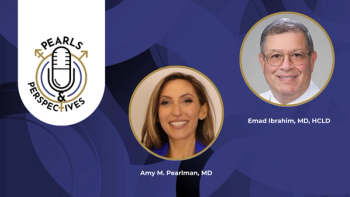
Vasectomy reversal: Tissue sealants superior to sutures
Vasovasostomy anastomosis that is reinforced by tissue sealants is significantly less time-consuming than standard suture techniques and less likely to leak, and certain glues perform better than others.
Key Points
New Orleans-Vasovasostomy anastomosis that is reinforced by tissue sealants is significantly less time-consuming than standard suture techniques and less likely to leak, and certain glues perform better than others. While this was shown in a study conducted on the vasa of bulls, the study's authors plan to test in a live animal model and eventually bring the research from bench to bedside.
"As a microsurgeon, I perform a lot of vasectomy reversals, and it takes a long time-from 3 to 4 hours-to do a modified one-layer procedure. I wanted to look at ways we could expedite the procedure, make it water-tight, and reduce the risk of inflammation and scarring," said J.C. Trussell, MD, assistant professor, division of urology, Penn State College of Medicine, Hershey, PA.
"We found that BioGlue and Dermabond were actually more durable and reliable than fibrin glue, and clearly better in terms of operative time than the surgical techniques," Dr. Trussell said.
In the study, the investigators cut bull vasa into 6-cm lengths and then divided them in half to simulate a vasectomy. Four vas segments were used for each of the five anastomotic techniques: a two-layer anastomosis consisting of six (10-0) mucosal sutures and six (9-0) muscularis sutures; a modified single-layer anastomosis consisting of six transmural sutures and six muscularis sutures (all 9-0); and a glue-reinforced anastomosis supported by three evenly spaced transmural (9-0) sutures (for each of the three glues).
A stopwatch was used to time the placement of sutures and then glue application (applied circumferentially); anastomotic patency was verified 24 hours later.
"I was surprised to learn that the [bull] vas is actually similar in size to the human. This actually makes it a perfect model for this experiment," Dr. Baxter noted.
Mean operative time was greatest for the two-layer anastomosis. The modified one-layer technique took less time, but the difference did not reach statistical significance. On the contrary, significantly less time was needed when glue was used to reinforce a three-suture anastomosis, the surgeons reported.
Advantages to glue
All the anastomotic procedures were patent, and on microscopic analysis, none of the glue-reinforced specimens had contaminated the lumen. On leak testing, BioGlue and Dermabond were superior to both fibrin glue and the two-suture techniques.
In a regression model that grouped together the three different glue procedures versus the two suture techniques, the odds of leaking were 1.6 times higher in the surgery group than in the glued group, although the difference did not reach statistical significance (p=.93).
The authors concluded that a glue-reinforced vasovasostomy anastomosis is significantly less time-consuming than standard suture techniques, and that BioGlue and Dermabond may be more leak-resistant than sutures or fibrin techniques. Although previous research showed that fibrin glue successfully reinforces vasovasostomies, these results suggest that the other two sealants offer even better results.
"Dermabond works great. It is clearly easier to use than fibrin and BioGlue because it comes out as a single stream, while the other two require that you administer two glues in a single stream. If you hesitate for a few seconds, the system clogs up," Dr. Trussell said. "The problem with Dermabond, however, is that it is not currently approved for internal use, although the company is trying to reformulate it to have less formaldehyde release. Realizing that Dermabond is not a viable option at this point, we hope to move the research forward with BioGlue and fibrin."
The investigators are now planning to test the strength of the glued anastomoses using a sensitive distraction force, then advance to a live animal model to assess durability. They believe the advantages to using tissue sealants will be less operating time, less leak, and therefore less risk of granuloma.
"I believe, based on my ongoing studies, that the glues are more durable than the stitches, and may actually be stronger. Granted, three stitches are put through the vas, but glue reinforces this more strongly than sutures alone can do," Dr. Baxter said.
Newsletter
Stay current with the latest urology news and practice-changing insights — sign up now for the essential updates every urologist needs.
















